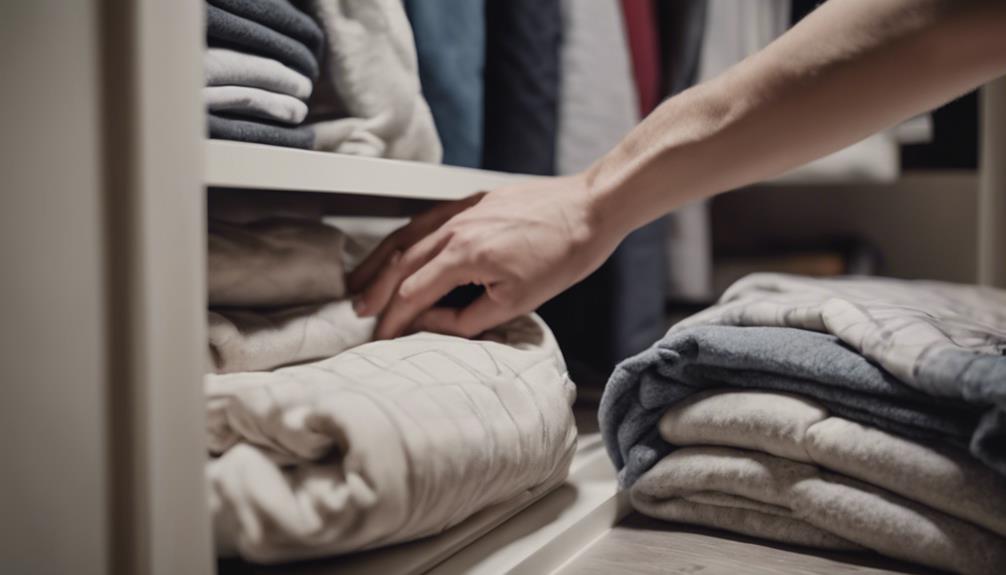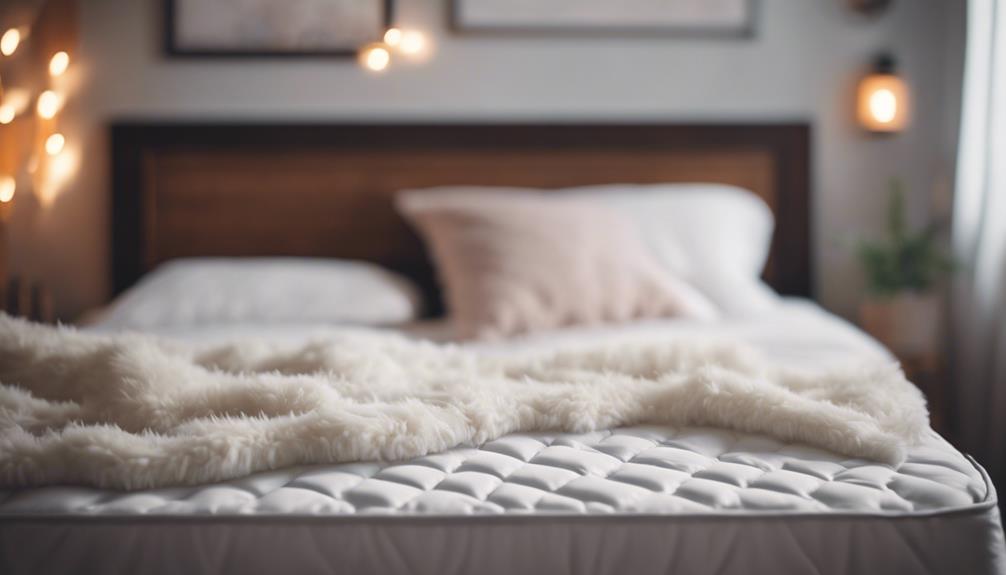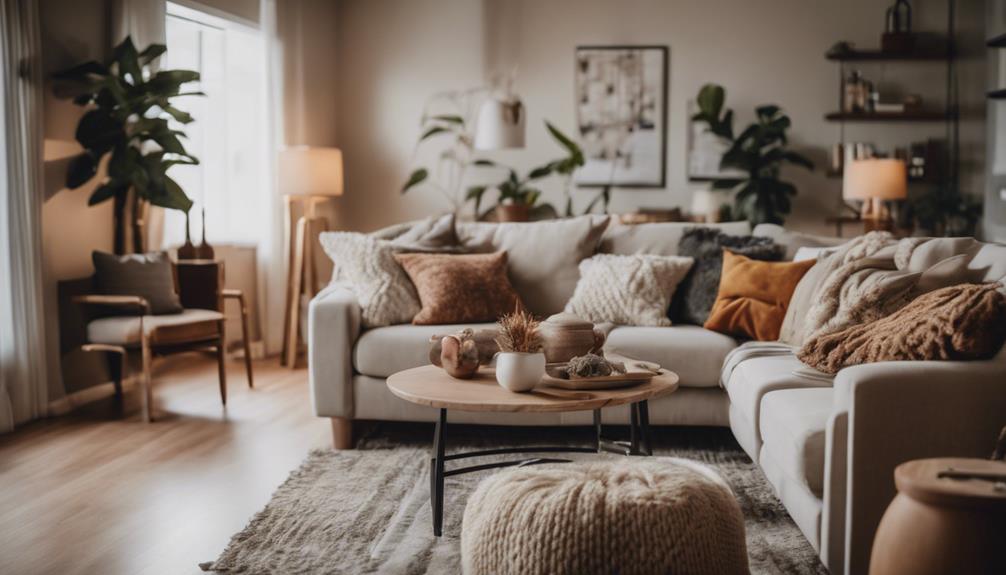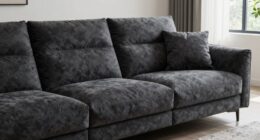When you’re ready to part with a blanket, make sure to acknowledge the emotional attachment, create a structured plan, and think of other ways to use it. Recognize its sentimental value before letting go of it. Gradually reduce access by setting specific goals. Use positive reinforcement such as praise and rewards. Seek support from caregivers. Celebrate small achievements as you progress. Consider repurposing or donating the blanket. Consistency is crucial in breaking dependence. Be patient and persistent. Having a clear plan and exploring alternatives will help with responsible decluttering. Check out detailed steps and strategies for dealing with sentimental items here.
Key Takeaways
- Repurpose blankets for shelters or crafting.
- Donate to charity or animal shelters.
- Utilize old blankets for pet bedding.
- Check local textile recycling centers for disposal.
- Upcycle into DIY home decor items.
Understanding the Attachment to Blanket
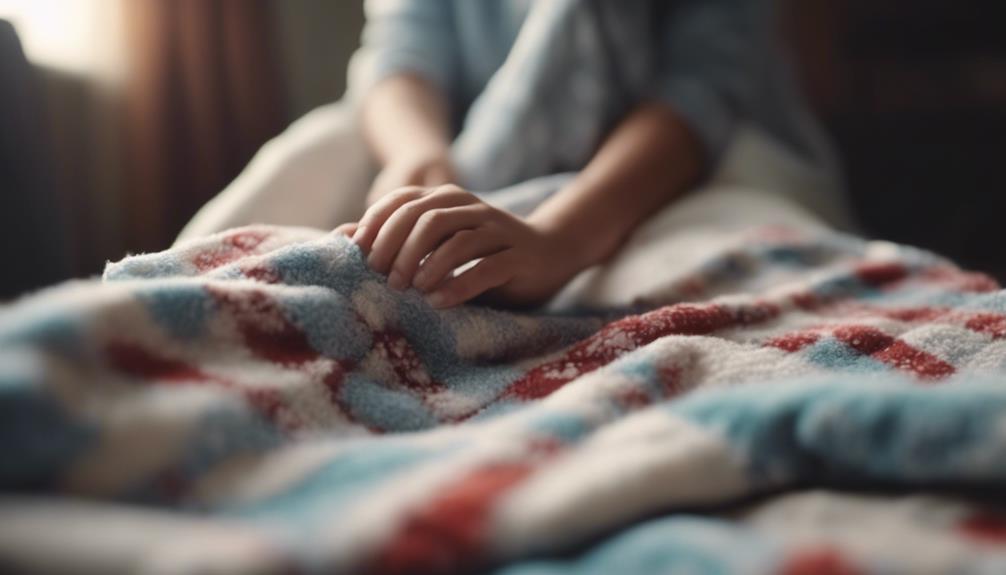
Understanding the attachment to a blanket begins with recognizing the deep emotional connections that can be formed with this simple yet significant item. Blankets often hold sentimental value, whether due to associations with loved ones, special occasions, or past experiences. The emotional attachment to a blanket can stem from childhood memories, comfort, and security it provides.
Personalized or handmade blankets, in particular, can evoke strong emotions, making it challenging to part with them. The sense of warmth, safety, and familiarity that a blanket offers can further deepen the emotional bond one may have with it. When considering parting with blankets, it's important to acknowledge the deep emotional connection one may have developed over time.
Understanding the emotional significance of a blanket is vital in deciding how to let go of it thoughtfully, ensuring that the process is respectful of the sentimental value it holds.
Gradually Limiting Blanket Access

When addressing the emotional attachment to a blanket, one effective approach involves gradually limiting access to it in specific situations or times of day. By encouraging the individual to use the blanket only during designated times, dependency can be reduced over time. Proper handling of this process is vital to guarantee a smooth shift.
Creating a structured plan with specific goals can help slowly decrease reliance on the blanket without causing distress. It's important to offer positive reinforcement and praise when progress is made in not using the blanket, as this can motivate the individual to continue with the gradual limitation. Additionally, implementing a reward system can further incentivize the reduction of blanket usage.
Proper disposal or junk removal of any extra blankets can also prevent temptation to revert back to old habits. Gradually limiting blanket access in a controlled and supportive manner is key to successfully breaking the emotional attachment.
Positive Reinforcement Techniques
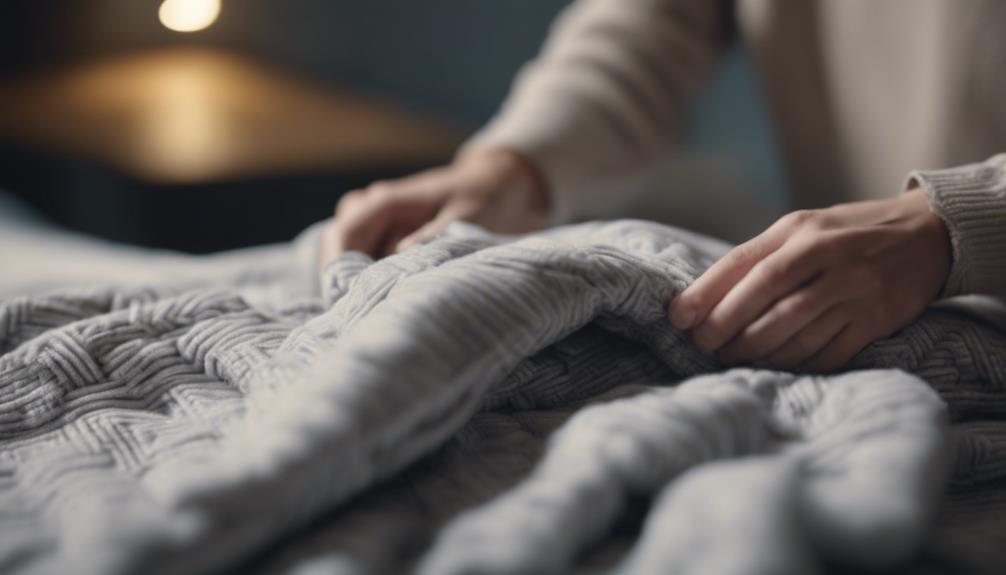
Positive reinforcement techniques involve rewarding good behavior to encourage desired actions. Rewards such as praise, tokens, or privileges can be utilized based on individual preferences.
This method increases the likelihood of behavior repetition in the future.
Rewarding Good Behavior
Encouraging good behavior in children involves utilizing positive reinforcement techniques to reward desired actions effectively. By offering rewards such as verbal praise, stickers, small treats, extra playtime, or special activities, we can motivate children to continue their positive behavior. Consistency is key in reinforcing these behaviors, helping children understand the benefits of their actions. Positive reinforcement focuses on acknowledging and encouraging behaviors that align with expectations, shaping children's understanding of right and wrong. To further emphasize the importance of rewarding good behavior, the table below illustrates different types of rewards that can be used effectively:
| Reward Type | Description | Example |
|---|---|---|
| Verbal Praise | Encouraging words to acknowledge | "Great job sharing!" |
| Stickers | Small adhesive rewards | Collectible stickers |
| Treats | Small edible incentives | Piece of chocolate |
Encouraging Desired Actions
Utilizing rewards and praise effectively encourages the desired action of getting rid of a blanket. When aiming to declutter and dispose of items sustainably, important reinforcement techniques play a vital role. Here are some ways to encourage the desired action of letting go of a blanket:
- Offer verbal praise and acknowledgment for taking steps to reduce clutter and minimize electronic waste.
- Implement a reward system where small incentives are given for each blanket successfully discarded.
- Celebrate progress made towards decluttering, reinforcing the positive behavior.
- Maintain consistency in applying positive reinforcement to solidify the habit of letting go of blankets responsibly.
Creating Structured Transition Plan
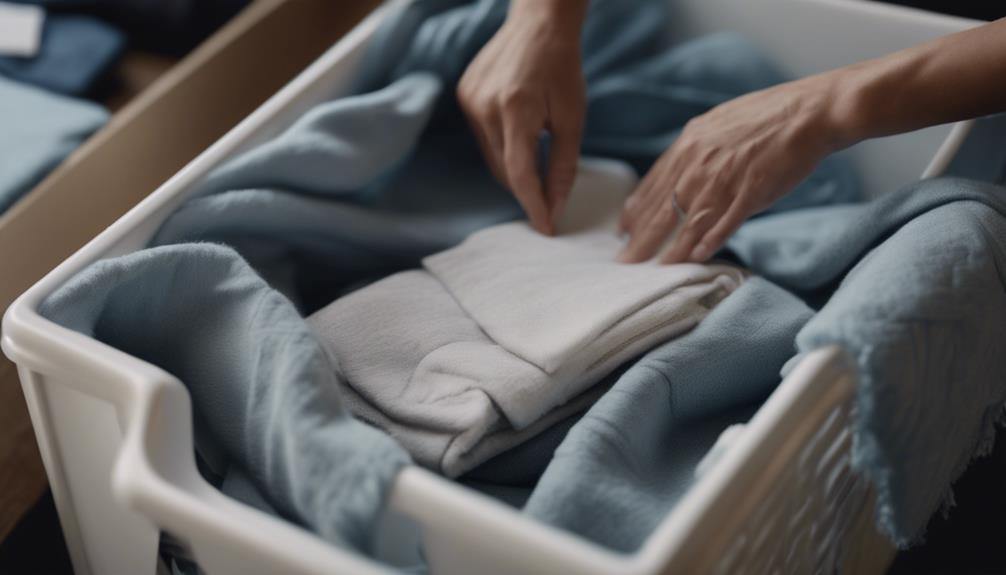
To successfully help a child move away from a blanket, it is essential to develop a clear and structured plan with specific goals. We need to make sure the shift plan is well-organized and tailored to the child's needs. Here is a helpful table outlining key steps to create a structured shift plan:
| Steps to Create a Structured Shift Plan | Details |
|---|---|
| Develop Clear Goals | Define specific objectives for reducing blanket use. |
| Establish a Consistent Schedule | Set up a routine to gradually decrease blanket reliance. |
| Use Positive Reinforcement | Employ praise and rewards to motivate the child. |
| Involve Caregivers | Engage all family members for consistent support. |
| Monitor Progress | Keep track of the child's development and adjust the plan accordingly. |
Celebrating Small Milestones

As we guide a child through the process of letting go of an intermediary object, it's vital to acknowledge and celebrate every small victory along the way.
Recognizing progress made in reducing reliance on the object, rewarding efforts, and offering praise for achievements are essential steps in fostering independence.
Gratitude for Progress
In our journey of letting go of a blanket, we take a moment to appreciate and celebrate the small milestones along the way. Acknowledging and celebrating each step taken towards decluttering helps us recognize the effort put into simplifying our space.
Finding joy in the progress made not only motivates us to continue but also allows us to see the positive impact of creating more space. Embracing gratitude for the journey of letting go of excess blankets enables us to reflect on the benefits of decluttering.
Each small achievement brings us closer to a more organized and peaceful environment, reinforcing the significance of each step in this process.
Reflecting on Achievements
Reflecting on our achievements, we find joy in celebrating the small milestones of progress made in letting go of the blanket. Each step taken towards reducing our attachment to the blanket is a significant accomplishment worth acknowledging.
By reflecting on our personal growth and the positive changes in our living spaces after decluttering, we can appreciate the value of letting go of sentimental items. Sharing these achievements with supportive friends or family members not only boosts our motivation but also reinforces the importance of decluttering for our mental well-being and emotional growth.
Embracing these small victories helps us stay focused on our goal of living a more clutter-free and fulfilling life.
Acknowledging Efforts
Our journey towards decluttering blankets is marked by celebrating the small milestones of progress made in acknowledging our efforts. Recognizing the effort put into sorting, donating, or repurposing blankets is vital in our decluttering process. Here are some ways we can celebrate these small victories:
- Recognize the steps taken towards decluttering blankets.
- Appreciate the time and energy spent sorting through blankets.
- Celebrate milestones like decluttering one closet or donating a few blankets.
- Boost motivation by acknowledging and celebrating every effort made in the decluttering journey.
Supporting Emotions and Preferences
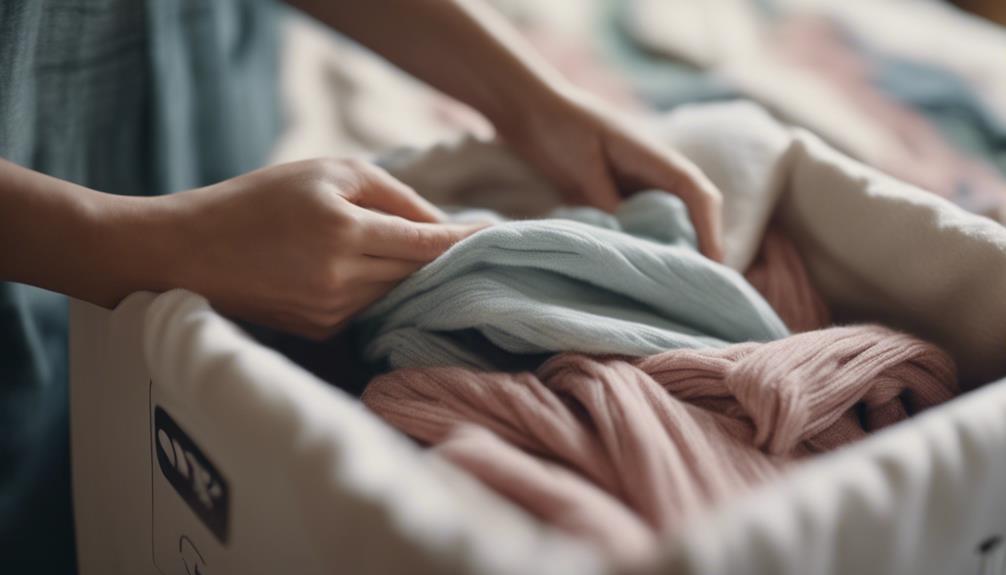
Understanding and acknowledging the emotional attachment to a blanket is vital when considering letting go of it. It's essential to validate the feelings and memories tied to the blanket, offering support and understanding during the decision-making process.
Encouraging the individual to explore alternative ways to preserve the emotions associated with the blanket can help facilitate the change. Suggesting options for repurposing or donating the blanket guarantees that it finds a new purpose or home, which can be comforting.
Additionally, proposing the creation of a ritual or ceremony to say goodbye to the blanket can be a meaningful way to honor its significance before parting with it. By supporting emotions and preferences in this manner, you can help the individual navigate the process of letting go of the blanket while still cherishing the memories it holds.
Encouraging Independence
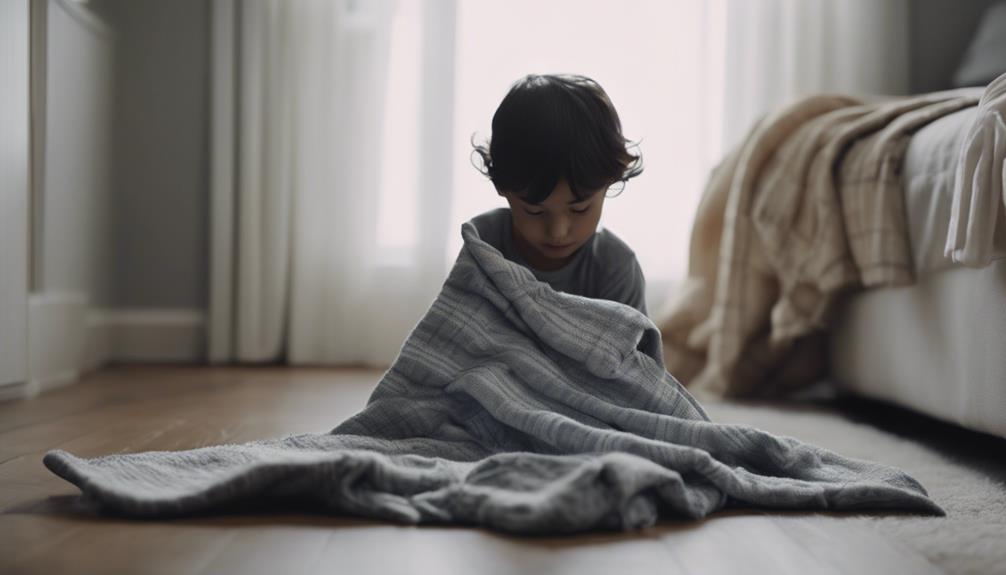
When considering letting go of a comfort object like a blanket, it's important to empower individuals to gradually foster their independence and self-reliance. Weaning off temporary objects involves a strategic approach to help individuals develop coping mechanisms independently.
Here are some key strategies to encourage independence in this process:
- Gradual Reduction: Slowly decreasing the availability of the temporary object can help the individual rely less on external comfort over time.
- Consistency: Maintaining a consistent approach in the weaning process provides a sense of predictability and stability for the individual.
- Positive Reinforcement: Offering praise and rewards for moments when the individual successfully soothes themselves without the temporary object can reinforce self-reliant behavior.
- Understanding Unique Needs: Recognizing and accommodating the individual's specific emotional needs throughout the weaning process is essential for a successful shift.
Providing Comfort and Alternatives
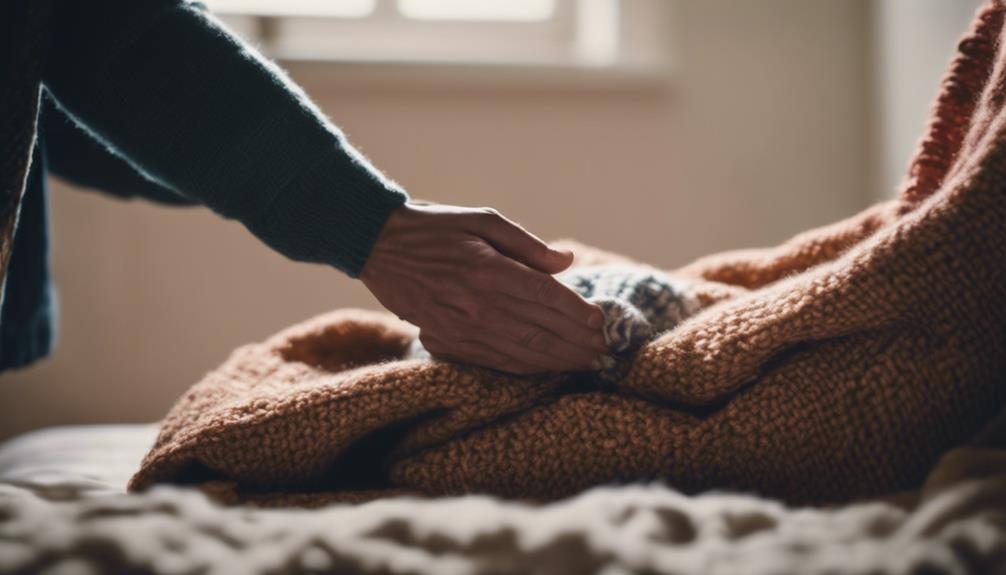
To offer solace and variety, one can explore creative ways to repurpose blankets rather than discarding them. Donating gently used blankets to shelters or charity organizations can provide comfort to those in need. Old blankets can find new life as pet bedding or be donated to animal shelters for warmth and comfort. For those looking for alternative options, blankets can be used for crafting projects, sewing, or as padding for fragile items during moving. Upcycling blankets into DIY home decor items like pillows, throws, or table runners offers a new purpose and adds a personal touch to your living space. To ensure responsible disposal, check with local textile recycling centers or organizations to contribute to environmental sustainability.
| Repurposing Ideas | Description |
|---|---|
| Donate to Shelters | Provide comfort to those in need by donating gently used blankets to shelters or charity organizations. |
| Pet Bedding & Crafting | Repurpose old blankets for pet bedding, crafting projects, sewing, or as padding for fragile items during moving. |
| DIY Home Decor | Upcycle blankets into pillows, throws, or table runners to give them a new purpose and enhance your home decor. |
Consistency in Blanket Reduction
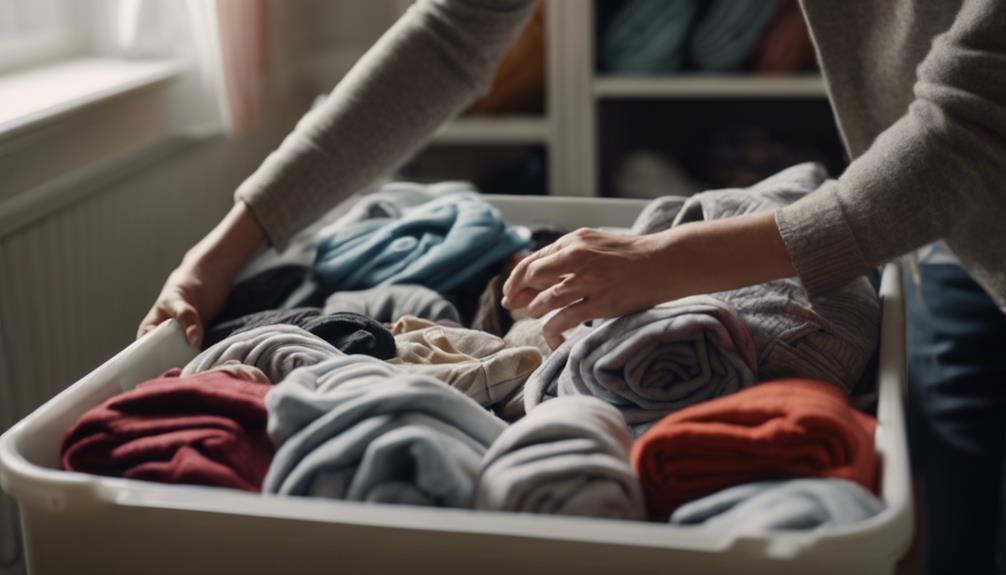
To maintain a minimalist and organized living environment, establishing a regular schedule for decluttering blankets is crucial. Consistency in reducing blankets not only helps in creating more space but also contributes to a clutter-free and serene living space. Here are some tips to maintain consistency in blanket reduction:
- Set a Decluttering Routine: Allocate specific times, whether weekly or monthly, to assess your blanket collection and decide which ones to keep, donate, or discard.
- Evaluate Blanket Usage: Regularly assess the need for each blanket based on its purpose and frequency of use. This practice helps in identifying blankets that serve a genuine purpose.
- Prevent Accumulation: By consistently decluttering blankets, you avoid the accumulation of unnecessary items in your living space, promoting a cleaner and more organized environment.
- Develop a Minimalist Mindset: Embrace a consistent mindset towards decluttering blankets to cultivate a minimalist lifestyle and make sure that only essential items remain in your possession.
Patience and Persistence in the Process
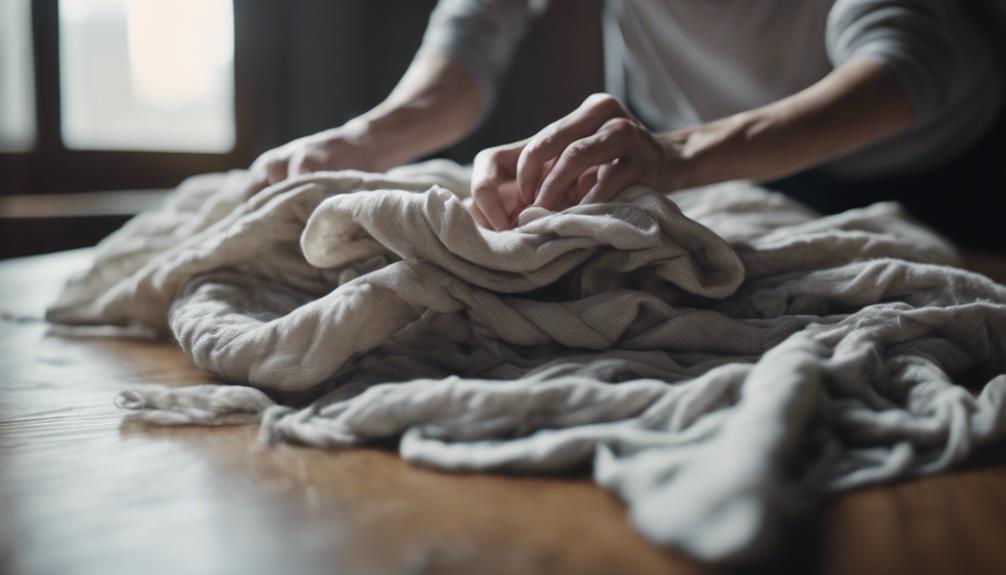
Understanding the importance of patience and persistence is vital when initiating the process of getting rid of a blanket. Sometimes, we may feel overwhelmed by the task of decluttering, especially when sentimentality is involved. It's imperative to remind ourselves of the reasons driving this decision, whether it's creating more space in our living area, reducing unnecessary items, or simply letting go of things we no longer need.
Evaluating the condition of the blanket can also guide us in determining the best course of action. If the blanket is still in good shape, donating it to someone in need or repurposing it can be a sustainable choice. Planning a disposal strategy, such as finding a local donation center or researching recycling options, can help streamline the process.
Additionally, seeking support from friends, family, or decluttering resources can keep us motivated and accountable throughout this journey. Remember, with patience and persistence, we can successfully declutter our space and part ways with the blanket responsibly.
Frequently Asked Questions
How Do I Get Rid of Old Blankets?
When it comes to old blankets, there are various ways to dispose of them responsibly. Donating to shelters, repurposing for crafts or pet use, and checking with local organizations are all excellent options.
If you need to throw them away, consider bulk pickup services or scheduling a collection appointment. Make sure to follow proper disposal methods, especially for blankets with electrical components, to prevent harm to the environment.
How to Throw a Blanket Away?
When discarding a blanket, make sure to follow proper disposal guidelines. Consult with local waste management for specific instructions. Consider reducing waste by recycling the blanket at a textile facility.
Donating to shelters or charities helps those in need. Repurposing for crafting or pet bedding extends its use. If in good condition, selling or giving it away to friends or online platforms is an option.
Proper disposal methods contribute to waste reduction efforts.
What to Do With Blankets You Don T Want Anymore?
When you have blankets you no longer want, consider donating them to shelters or repurposing them for quilting projects. This way, your unwanted blankets can bring warmth and comfort to those in need.
Additionally, exploring donation platforms or connecting with individuals through social media can help extend the life of your blankets. By finding new homes for them, we can reduce waste and support our community, just like a beacon of hope in the dark.
What to Do When You Have Too Many Blankets?
When you have too many blankets, it's crucial to assess your needs and keep only what's necessary for each bed. Consider storing extras for guests, emergencies, or family members who enjoy using blankets. Multiple locations like emergency kits, cars, and pet areas can be utilized.
Donation to shelters is a thoughtful option. Finding inspiration in decluttering success stories can motivate you to repurpose or donate excess blankets.
Can the Method of Displaying a Hermes Blanket Help in Getting Rid of It?
Displaying a Hermes blanket can increase its visibility and attract potential buyers or admirers. By showcasing the luxurious design and quality of the blanket, it can generate interest and lead to a sale or gift. A well-presented display hermes blanket can help in finding it a new home.
Conclusion
To sum up, letting go of a beloved blanket can be like parting ways with a loyal friend. By gradually limiting access, using positive reinforcement techniques, and providing comfort and alternatives, the process can be easier for both you and your loved one.
Remember to celebrate small milestones, encourage independence, and remain consistent and patient throughout the journey. With persistence and understanding, you can successfully help your loved one reduce their attachment to their blanket.
